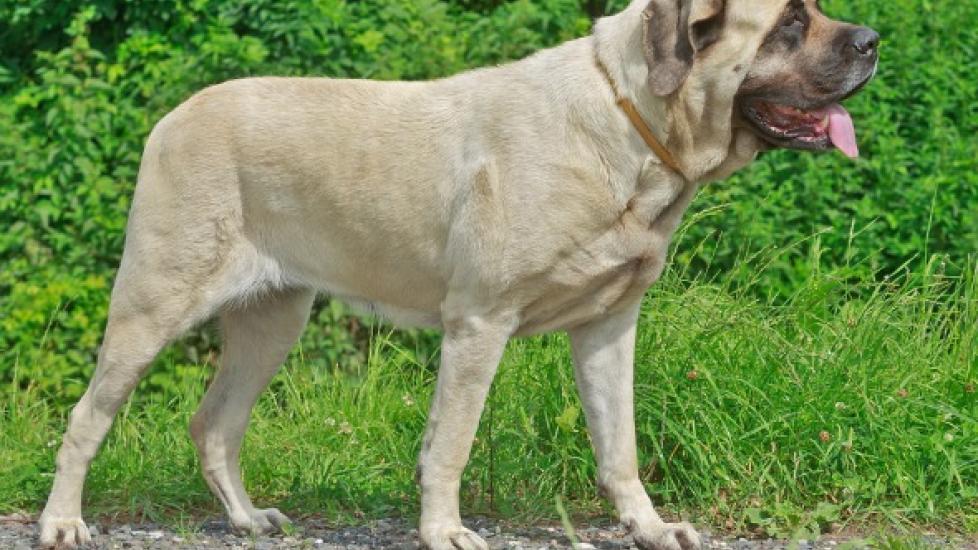Bone Cancer (Chondrosarcoma) in Dogs
Chondrosarcoma of the Bone in Dogs
Chondrosarcoma (CSA) of the bone is a fast spreading and malignant form of cancer, which, if not diagnosed and treated early, can be life threatening. Chondrosarcoma arises from the cartilage of the body, the connective tissue that is found between the bones and joints, often metastasizing to other parts of the body, including the ribs. This is the most common rib tumor found in dogs, and the second most common primary tumor in dogs, representing 5 to 10 percent of all primary bone tumors.
The majority of CSAs involves flat bones, with about 30 percent occurring in the nasal cavity and about 20 percent involving the ribs. This form of cancer also affects the limbs, with a resulting weakening in the structure of the bone due to the invasive tumor. Fractures of the bone are common.
Large dog breeds are at higher risk, as well as older dogs. Chondrosarcoma most commonly affects dogs around eight years of age, but it has been found in dogs of almost all ages.
Symptoms and Types
- If tumor is affecting leg, lameness will be observed
- Pain in affected area, e.g. limb
- Swelling at tumor site
- Sneezing and difficult breathing if tumor involves nasal cavity
- Nasal discharge and/or nose bleed if tumor involves nasal cavity
- Fracture in the bone of the affected limb
- Other signs will depend upon the metastatic site(s)
Causes
Although an exact cause has not been identified, multiple cartilaginous growths or protuberance may lead to this form of cancer.
Diagnosis
You will need to give a thorough history of your dog’s health and onset of symptoms. Your veterinarian will perform a thorough physical exam on your dog, including a complete blood count (CBC), a biochemistry profile, and a urinalysis. The results of these tests are usually within normal ranges. Tissue samples from the local lymph nodes will also be taken for analysis of cancer cells and evidence of immune system response.
Radiographic studies of the affected areas may show the extent of the tumor’s invasion. X-rays, computed tomography (CT) scans, nuclear bone scans, and radiographic scans will usually be helpful in diagnosing the stage and type of the tumor. Bone scans may show involvement of soft tissue and adjacent bones. The most conclusive and direct method for making a diagnosis is normally by taking a biopsy of the growth for microscopic laboratory analysis.
Treatment
This is highly aggressive and life-threatening tumor, which requires prompt treatment. Amputation or limb salvage is usually recommended in cases where there is no metastasis (spreading) of the tumor in the affected limb. For nasal tumors, radiation therapy is normally the treatment of choice. Radiotherapy may also help in prolonging the lifespans in those dogs in which tumors are inoperable.
If the tumor involves the ribs, your veterinarian may decide to remove the affected ribs and nearby lung tissues through a wide excision in order to prevent metastasis. Chemotherapy may also be recommended, but the effectiveness of this therapy has not yet been fully evaluated for CSA. Currently, surgery is the only treatment given for this disease.
Living and Management
You may be advised to revisit your veterinarian every three month for follow-up evaluation. During this time, your veterinarian will evaluate your dog to see if any metastasis has occurred. Routine X-rays will be taken of the affected part and other body areas to check for recurrence and spread of the tumor.
After surgery, you should expect your dog to feel sore. You will need to limit your dog’s activity until it heals, setting aside a quite place for it to rest, away from windows, entryways, common areas, other pets, and active children. If it is difficult to control your dog’s movement, you may consider cage rest, placing your dog’s food dishes close by for its comfort. If possible, slow walks close to home will be best, but if your dog is in too much pain to go outdoors to relieve itself, you will need to consider making a temporary space indoors for the interim, carrying your dog outdoors, or using a catheter. Ask your veterinarian for advice regarding which method would be best for your dog.
In case of leg amputation, most dogs will not have any problems learning to compensate for the lost limb and will go on to live a happy and comfortable life.
Pain management is crucial for the effective treatment of chondrosarcoma; your veterinarian will prescribe the appropriate painkillers. Follow instructions for medications strictly. One of the most avoidable causes of death for domestic pets is overmedication.
Nutrition is very important for a swift recovery and you will need to monitor your dog’s food and water intake while it is recovering, making sure that it is hydrated enough and is getting sufficient amounts of food, but taking care not to overfeed your dog. If your dog cannot take food on its own, your veterinarian will instruct you on the proper use of a feeding tube that can be passed down into the stomach for food administration.
